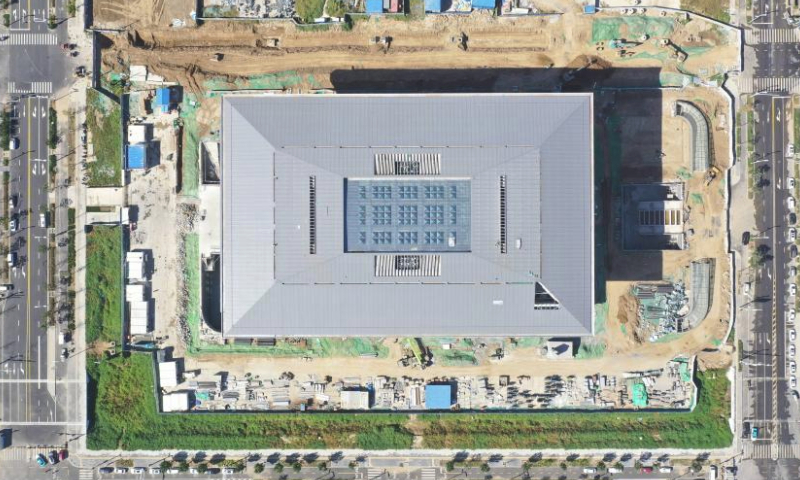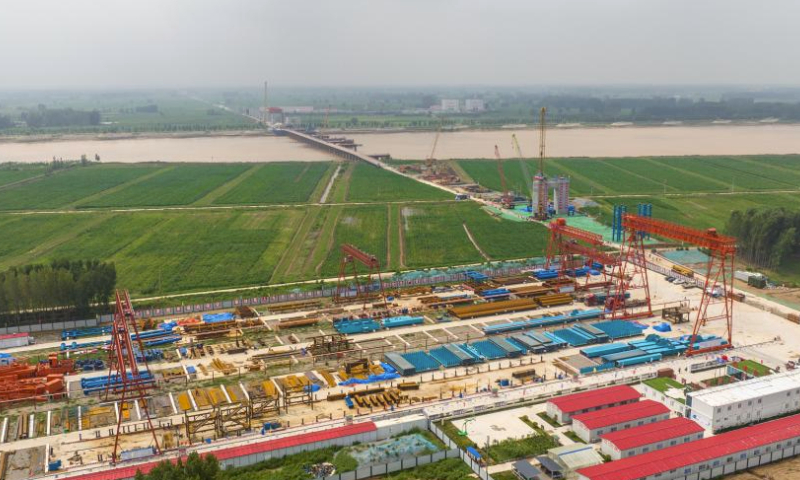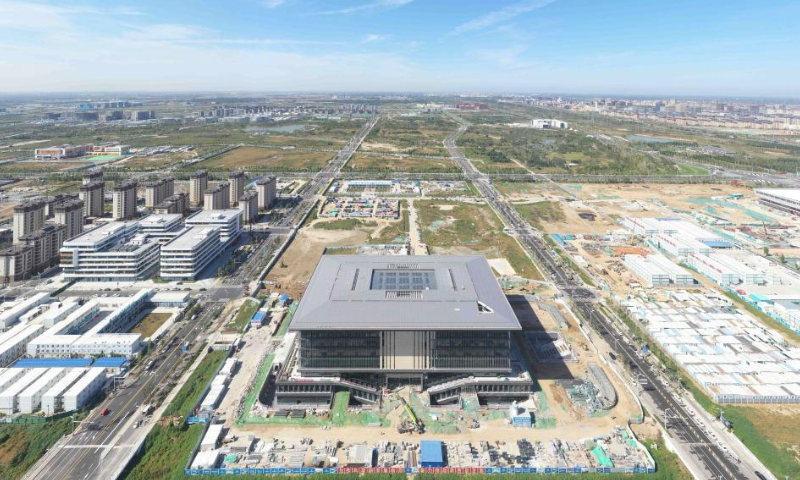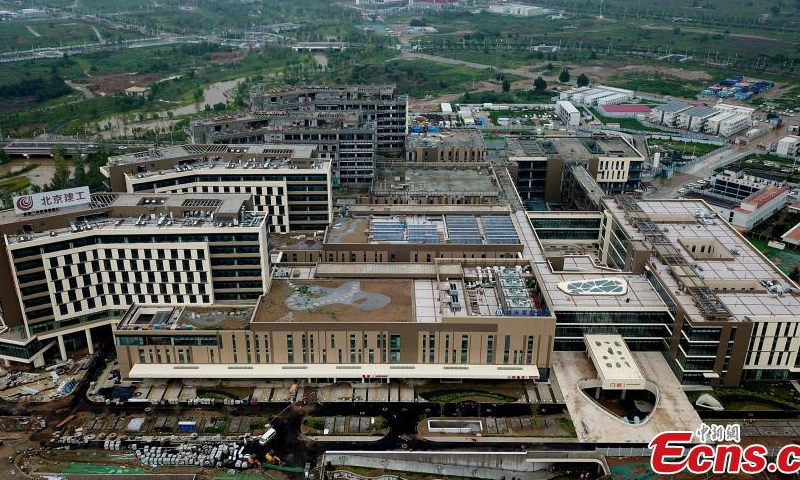Ten years on, Beijing, Tianjin and Hebei embrace increasingly integrated growth
Region is closely tethered in infrastructure, supply chain and more

This aerial photo taken on Oct. 1, 2023 shows the construction site of a library at the university zone in Xiong'an New Area, north China's Hebei Province. (Xinhua/Zhu Xudong)
From rapidly progressing infrastructure to technological achievements, the development of the Beijing-Tianjin-Hebei region has been impressive since the proposal of a national strategy dedicated to coordinated development of the region came out in February 2014.
Enterprises, experts and local residents in the region briefed the Global Times major achievements realized in the past decade, as well as regional development potential in emerging industries.
The launch of the high-speed railway line connecting Beijing and Zhangjiakou in North China's Hebei Province in 2019 cuts the commute time between the two cities from three hours to less than one hour, a Zhangjiakou resident surnamed Liu who works in Beijing told the Global Times on Monday.
Liu's experience is a snapshot of the integrated transportation system under coordinated development of the Beijing-Tianjin-Hebei region, which has also propelled the progress of industry and supply chains.
For instance, the China Railway Rolling Stock Corp (CRRC) Tangshan Co has built platforms and demonstration bases to promote development of the industry cluster, focusing on rail transportation and targeting rail manufacturing, services and more, the company said in a statement sent to the Global Times on Monday.
CRRC Tangshan has developed own platforms to elevate the digitization level of the whole industry chain, the company said.
As of the end of 2023, the total length of the high-speed rail system in the Beijing-Tianjin-Hebei region reached 2,576 kilometers, with all prefecture-level cities in the region covered by the rail network.
A one-hour transportation circle in the core area of the region and a 90-minute transportation circle among neighboring cities have basically been formed, according to a report released by the Beijing Municipal Bureau of Statistics on Sunday.
A Global Times reporter recently visited the Beijing Sub-Center Railway Station, now under construction in Beijing's Tongzhou district and is set to be the largest of its kind in Asia, as well as the Xiong'an New Area in Hebei Province. The regions have witnessed the high-quality and fast-paced progress of these signature projects, which exemplify China's all-round efforts in promoting regional integration and development.
Construction in the Xiong'an New Area, a key region for promoting the coordinated development of the Beijing-Tianjin-Hebei region with a vision of being "the city of the future," is in full swing.
The application scenario for blockchain in the Xiong'an New Area is probably one of the largest of its kind in China, which plays a significant role in blockchain technology in serving digital government and propelling digital economy, Meng Hongwei, deputy director of the Xiong'An Blockchain Lab with the Intelligent City Innovation Federation, told the Global Times on Monday.
Meng said that the Xiong'an New Area has initially built a variety of computing facilities, constituting a computing base and supporting the construction of the "city in the cloud" there.
The value added of Beijing's digital economy reached 1.88 trillion yuan ($261.18 billion) in 2023 from 871.94 billion yuan in 2015, accounting for 42.9 percent of the capital city's GDP now.
Experts highlight the development of new productive forces, especially in the strategic emerging industries and industries of the future, as a focal point for the region's future development.
In 2023, the GDP of the Beijing-Tianjin-Hebei region reached 10.4 trillion yuan, or 1.9 times that of 2013 at current prices.
As for regional environment, a research report revealed that air quality in the Beijing-Tianjin-Hebei region has kept improving in the past several years, with PM2.5 concentrations decreasing by 64.2 percent in Beijing, 57.3 percent in Tianjin and 64.3 percent in Hebei Province in 2023, compared with 2013.



